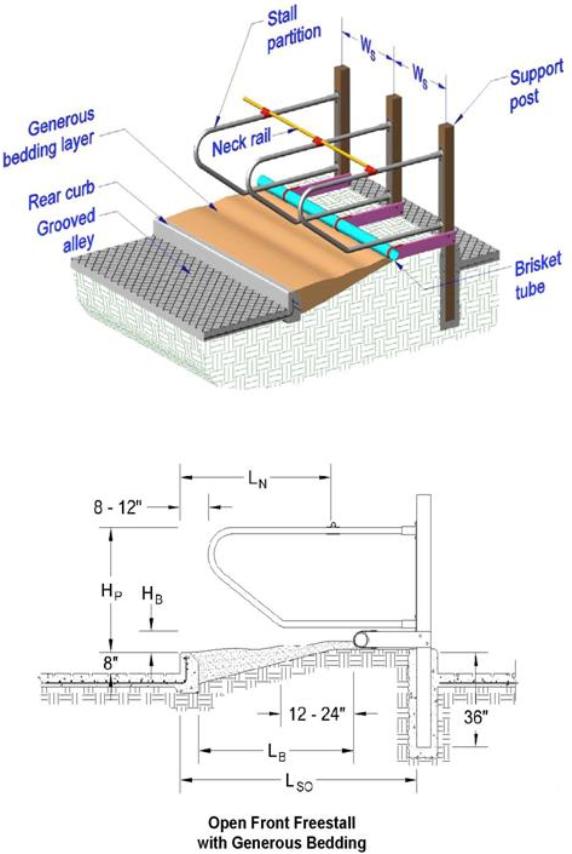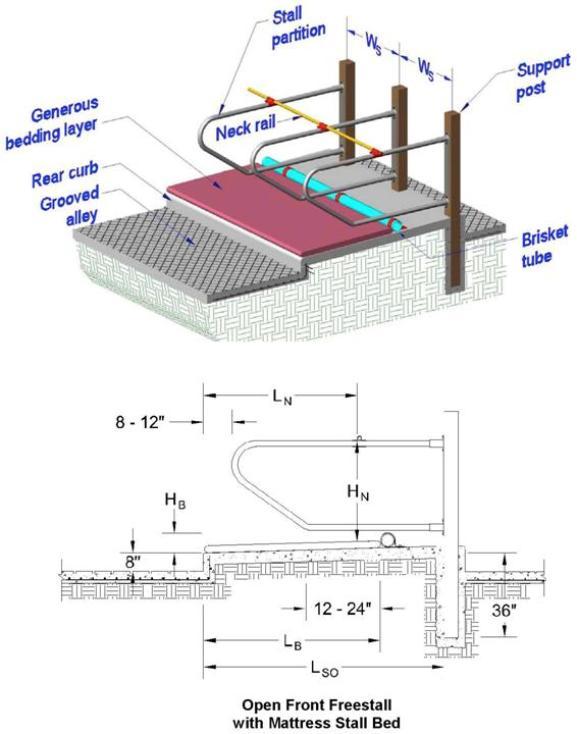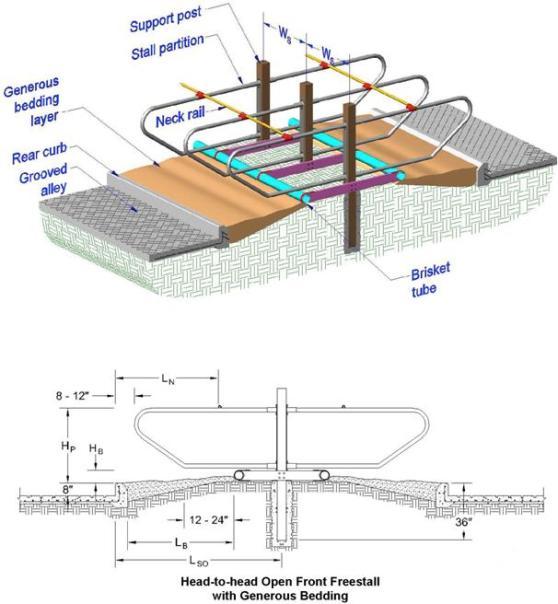Introduction
An ideal free stall will allow a cow to recline, rise, and change position without coming into contact with any portion of the stall except the base or bedding. Items such as partitions, neck rails, brisket tubes, and stall supports should be guides that define the cow’s resting area but do not hinder her movements or result in injuries or entrapment.
Please check this link first if you are interested in organic or specialty dairy production
Sizing a Free Stall
The numbers, illustrations, and diagrams in this detail sheet provide guidance in how to size a free stall for cow comfort and use and convenient maintenance. Important items to consider in selecting and installing free stalls include:
- Cow size variations by breed, age, and stage of lactation
- Open or closed front free stalls
- Base and bedding that provide a comfortable and confident surface for resting
- Lunge space for cow to extend her body into as she reclines and rises
- Convenient maintenance that allows caretakers to keep cows clean, dry, and comfortable
| Animal Weight (lbs) |
Total Stall Length Closed Front (in) |
Total Stall Length Open Front (in) |
Length to Brisket Tube or Board (in) |
Length to Neck Rail (in) |
Stall Width Center to Center (in) |
Height to Top of Partition (in) |
Height to Neck Rail (in) |
Brisket Board or Tube Height (in) |
| LSC | LSO | LB | LN | WS | HP | HN | HB | |
| 900-1100 | 90-96 | 78-82 | 64-66 | 62-64 | 41-43 | 42-44 | 42-44 | 4-6 |
| 1100-1300 | 96-102 | 80-86 | 66-68 | 64-66 | 43-45 | 44-46 | 44-46 | 4-6 |
| 1300-1500 | 102-108 | 90-96 | 68-70 | 66-68 | 45-48 | 46-48 | 46-48 | 4-6 |
| 1500-1700 | 108-114 | 96-102 | 70-72 | 68-70 | 48-52 | 48-52 | 48-52 | 4-6 |
(See illustrations of varying stall configurations blow.)
This information provides guidance as to how much space each stall will occupy and where to place the components. It is based on values found in the literature and field experiences. The American Society of Agricultural and Biological Engineering (ASABE), Natural Resource, Agriculture and Engineering Service (NRAES), Midwest Plan Service (MWPS), Dairy Practices Council (DPC), as well as various dairy and veterinary publications and manufacturers’ literature are also sources of information. Final adjustments of the components will require careful observation of the cows and their stall use such as:
- Do cows readily and easily use the stalls?
- Are there injuries, punctures, abrasions, or swelling to hocks, legs, hips, etc.?
- Do cows have to push, bang, or bump against stall components to recline, rise, or change positions?






Dairy Idea Plan Number 821
Cow Free stall (Cubicle), Types and Details
Date:10/06/05
Penn State Agricultural & Biological Engineering
Cooperative Extension
http://www.abe.psu.edu
Author Information
R. Graves
D. McFarland
J. Tyson
T. Wilson
Penn State University
